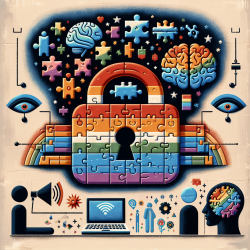Introduction
As practitioners in the field of speech-language pathology, we are always seeking ways to enhance the quality of life for the children we serve. Recent research, such as the study titled "Socioeconomic Status and Quality of Life: An Assessment of the Mediating Effect of Social Capital," offers valuable insights that can inform our practices. This study underscores the importance of social capital as a mediator between socioeconomic status and quality of life, presenting a compelling case for integrating social capital-building strategies into our therapeutic approaches.
Understanding Social Capital
Social capital refers to the networks, relationships, and norms that facilitate collective action and provide individuals with access to resources and support. In the context of socioeconomic status and quality of life, social capital acts as a buffer, helping individuals leverage their existing resources to improve their well-being. This is particularly relevant for children, as their social environments play a crucial role in their development and quality of life.
The Study's Findings
The research highlights several key findings:
- Socioeconomic Status and Quality of Life: Higher socioeconomic status is strongly correlated with better quality of life. This is due to increased access to resources, education, and opportunities.
- Role of Social Capital: Social capital significantly mediates the relationship between socioeconomic status and quality of life. It provides a support network that can enhance well-being, especially for those from lower socioeconomic backgrounds.
- Implications for Practice: By fostering social capital, practitioners can help mitigate the negative impacts of socioeconomic disparities on children's quality of life.
Practical Applications for Practitioners
As practitioners, we can implement strategies to build social capital within our therapeutic settings and communities:
- Encourage Social Interaction: Facilitate group activities that promote interaction and cooperation among children. This helps build trust and friendships, which are foundational elements of social capital.
- Involve Families and Communities: Engage families and community members in therapy sessions and activities. This creates a supportive network that extends beyond the therapy room.
- Provide Resources and Information: Share information about community resources and opportunities that can benefit children and their families, enhancing their social capital.
- Promote Inclusive Practices: Ensure that all children, regardless of their socioeconomic background, have equal access to opportunities and resources within the therapy setting.
Encouraging Further Research
The study also calls for further research into the mechanisms through which social capital influences quality of life. As practitioners, we can contribute to this body of knowledge by documenting our observations and outcomes when implementing social capital-building strategies. Collaborating with researchers to explore these dynamics can lead to more effective interventions and policies.
Conclusion
Incorporating the insights from this study into our practice can have a profound impact on the children we serve. By fostering social capital, we can help bridge the gap between socioeconomic disparities and quality of life, ensuring that all children have the opportunity to thrive. To read the original research paper, please follow this link: Socioeconomic Status and Quality of Life: An Assessment of the Mediating Effect of Social Capital.










